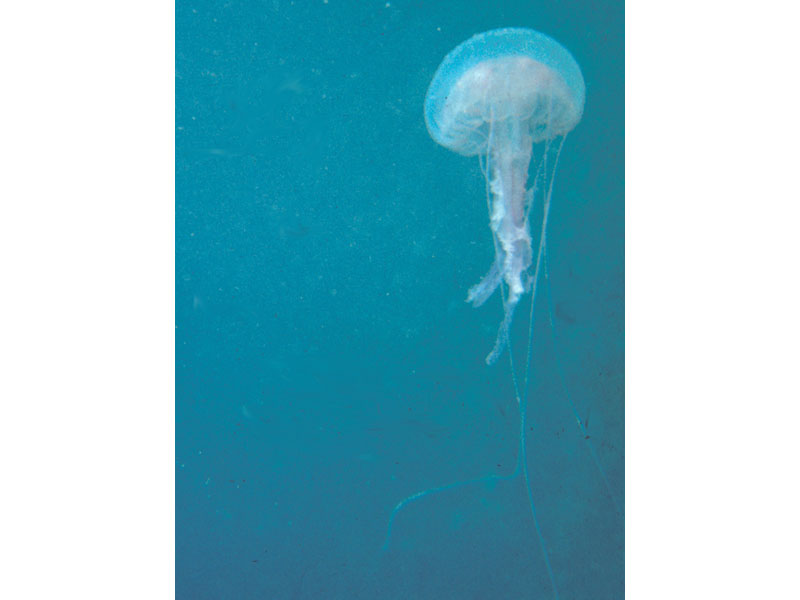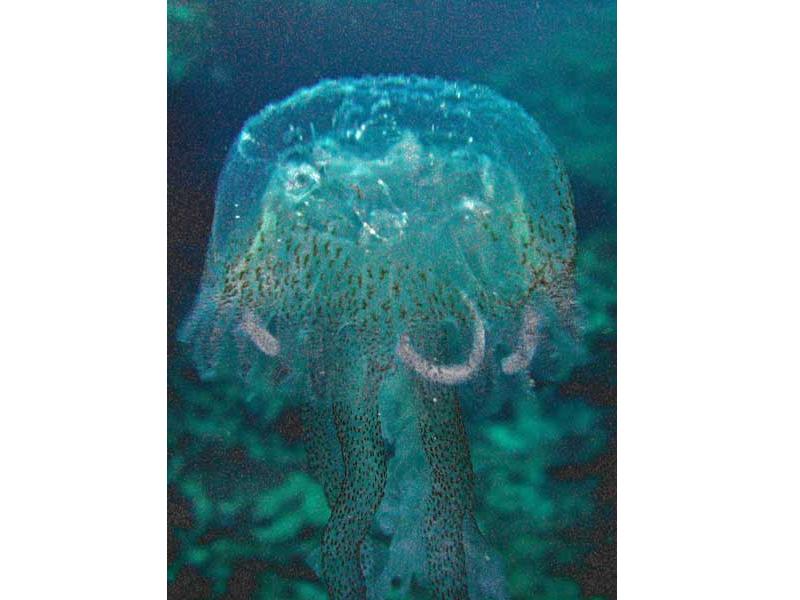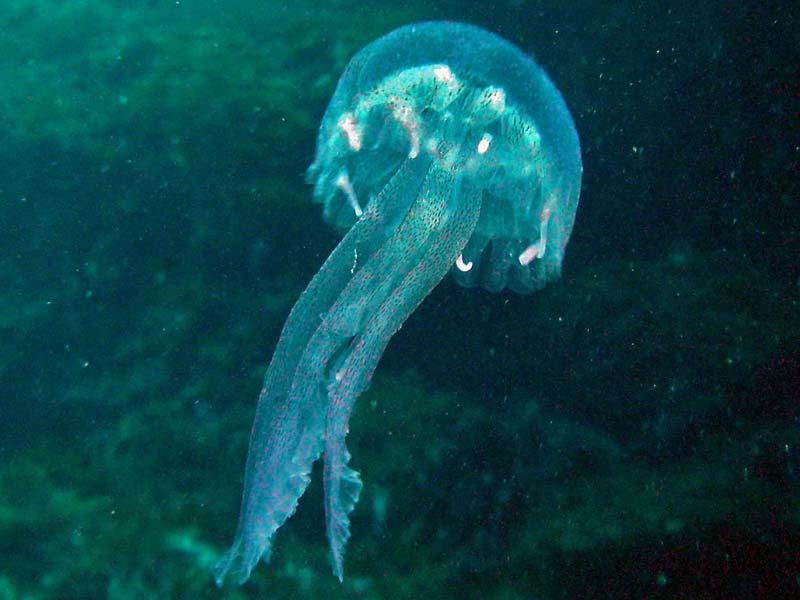Mauve stinger (Pelagia noctiluca)
Distribution data supplied by the Ocean Biodiversity Information System (OBIS). To interrogate UK data visit the NBN Atlas.Map Help
| Researched by | Jessica Heard | Refereed by | Admin |
| Authority | (Forsskål, 1775) | ||
| Other common names | - | Synonyms | - |
Summary
Description
Recorded distribution in Britain and Ireland
Pelagia noctiluca is an uncommon jellyfish around the British Isles but may be found anywhere over deep water off the west and north coasts (Russell, 1970).Global distribution
-Habitat
Pelagia noctiluca is an oceanic species widely distributed in warm and temperate waters.Depth range
-Identifying features
- Mushroom shaped bell.
- Exumbrella and tentacles are covered in pink or mauve nematocysts.
- 16 marginal lobes
- 8 marginal sense organs
- 8 hair-like marginal tentacles.
Additional information
Pelagia noctiluca feed mainly on pelagic ascidians and other small jellyfish (Hayward et al., 1996).Although the sting of Pelagia noctiluca is potent and painful, it is limited in time and extent (Williamson et al., 1996).
Listed by
- none -
Bibliography
Crothers, J.H. (ed.), 1966. Dale Fort Marine Fauna. London: Field Studies Council.
Fish, J.D. & Fish, S., 1996. A student's guide to the seashore. Cambridge: Cambridge University Press.
Hayward, P., Nelson-Smith, T. & Shields, C. 1996. Collins pocket guide. Sea shore of Britain and northern Europe. London: HarperCollins.
Howson, C.M. & Picton, B.E., 1997. The species directory of the marine fauna and flora of the British Isles and surrounding seas. Belfast: Ulster Museum. [Ulster Museum publication, no. 276.]
Williamson, J.A., Fenner, P.J., Burnett, J.W. & Rifkin, J.F., 1996. Venomous and poisonous marine animals: a medical and biological handbook. Sydney: University of New South Wales Press.
Datasets
Centre for Environmental Data and Recording, 2018. Ulster Museum Marine Surveys of Northern Ireland Coastal Waters. Occurrence dataset https://www.nmni.com/CEDaR/CEDaR-Centre-for-Environmental-Data-and-Recording.aspx accessed via NBNAtlas.org on 2018-09-25.
Fenwick, 2018. Aphotomarine. Occurrence dataset http://www.aphotomarine.com/index.html Accessed via NBNAtlas.org on 2018-10-01
Marine Conservation Society, 2018. UK Jellyfish Sightings from 2003 to 2015. Occurrence dataset: https://www.mcsuk.org/ accessed via NBNAtlas.org on 2018-10-01.
National Trust, 2017. National Trust Species Records. Occurrence dataset: https://doi.org/10.15468/opc6g1 accessed via GBIF.org on 2018-10-01.
NBN (National Biodiversity Network) Atlas. Available from: https://www.nbnatlas.org.
OBIS (Ocean Biodiversity Information System), 2025. Global map of species distribution using gridded data. Available from: Ocean Biogeographic Information System. www.iobis.org. Accessed: 2025-07-04
Outer Hebrides Biological Recording, 2018. Invertebrates (except insects), Outer Hebrides. Occurrence dataset: https://doi.org/10.15468/hpavud accessed via GBIF.org on 2018-10-01.
Citation
This review can be cited as:
Last Updated: 24/04/2008





